Top Tips About Internet Safety: How to Stay Secure Online in 2025

We may earn a small fee from the companies mentioned in this post.
Internet safety is about protecting your personal data from online threats. In this guide, you’ll learn how to identify cyber risks, recognise online scams, and follow tips for secure browsing. Additionally, understanding the need to accept targeting cookies is crucial, as it involves user consent and legal obligations for child online safety. The prevalence of fake news makes it essential to verify sources to avoid misinformation.
Key Takeaways
Understanding and adopting robust internet safety measures is essential to protect personal information and promote a healthy digital environment.
Cyberbullying and phishing scams are prevalent online risks, necessitating education and protective measures for both adults and children.
Utilising strong passwords, enabling two-factor authentication, and regularly updating security software are key strategies for enhancing online security.
Understanding Internet Safety
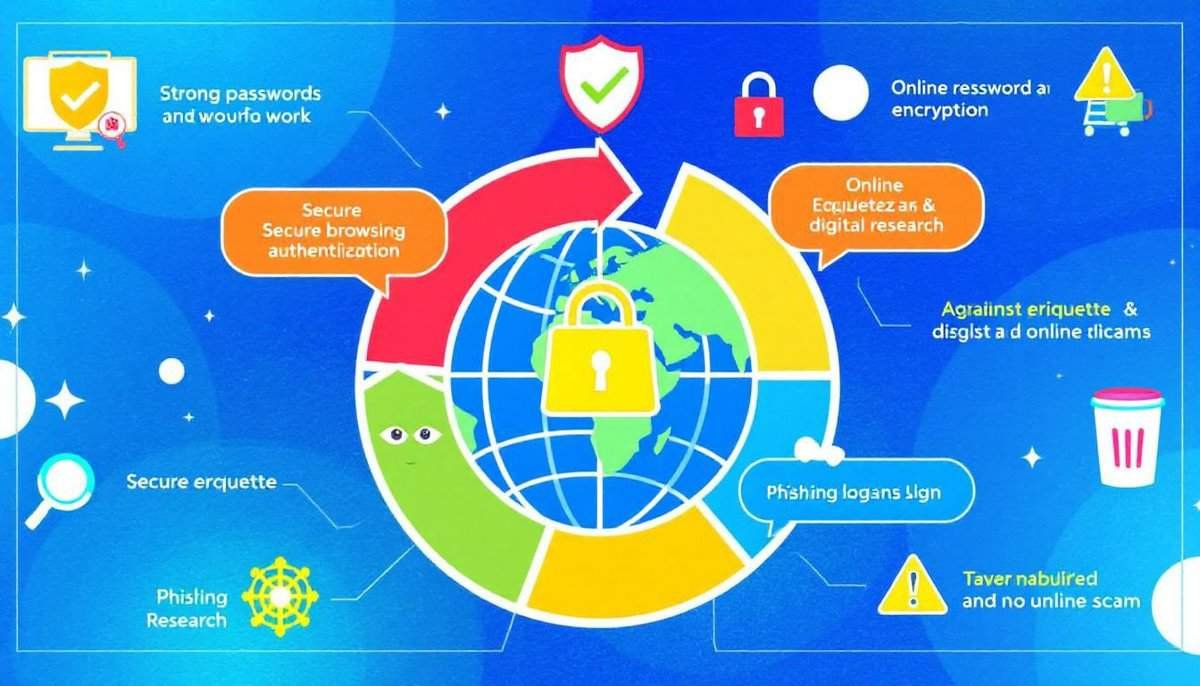
Internet safety, often referred to as online safety or cyber safety, is the practice of protecting oneself from the myriad of online risks that can jeopardise personal information and mental health. With the increasing number of internet-connected devices, understanding internet safety is more crucial than ever. Imagine the internet as a vast ocean where each device is a boat; without proper safety measures, these boats can easily be swamped by waves of cyber threats.
The rise in the number of accounts and devices has inevitably led to an increased risk of cybercrimes, making it essential for individuals to adopt robust cyber safety practices. This helps internet users protect themselves from dangers like online bullying, phishing scams, and unauthorized data access. Being safe online not only safeguards personal information but also promotes a healthy digital environment, especially for the younger generation.
Internet safety encompasses various devices, from smartphones to smart home gadgets, all of which require protective measures to ensure security. Understanding potential dangers and adopting proper safety rules can significantly reduce risks to our data and devices. Adults, in particular, should model safe online behavior to set a positive example for children.
Common Online Risks
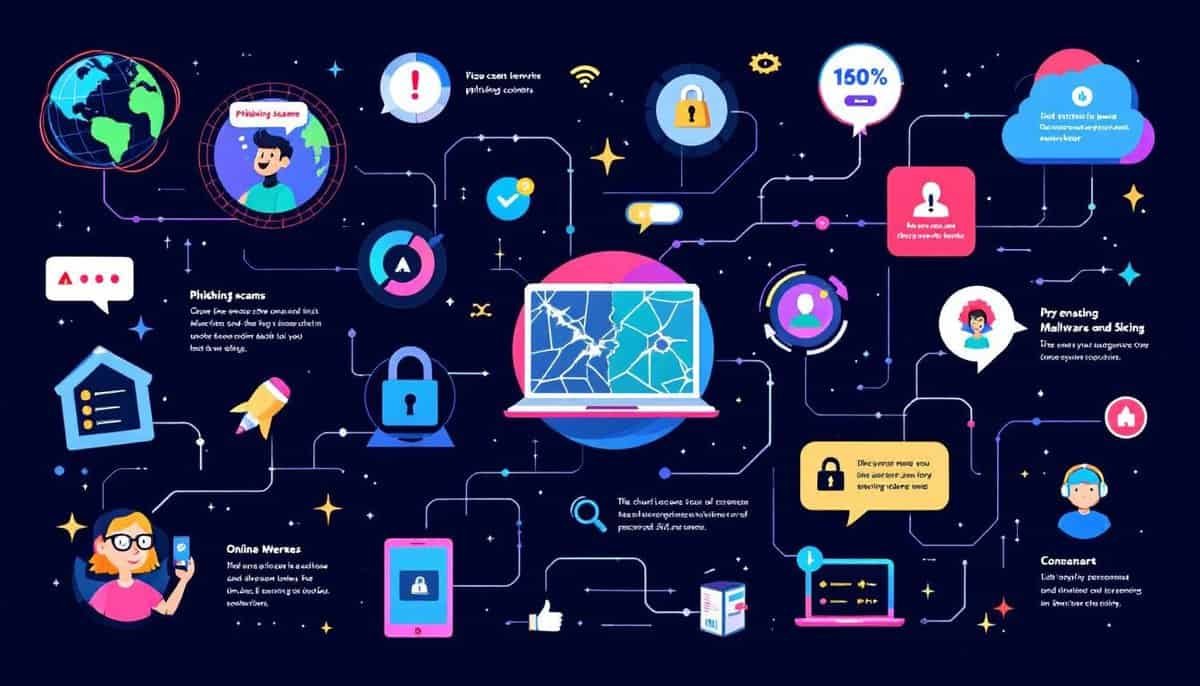
Navigating the online world comes with its set of challenges and risks. One of the most prevalent issues is cyberbullying, which has seen a significant increase, with more cases reported by parents and children seeking help. Cyberbullying involves personal attacks using technology, aimed to cause harm and emotional distress. Educating children on identifying and responding to cyberbullying is essential.
Phishing scams are another common threat, with nearly 3 million new phishing and fraudulent websites identified in the first half of 2023 alone. These scams often involve scam emails and fake websites designed to trick users into providing sensitive information. Scammers frequently create online stores with unbelievably low prices to lure customers, risking their financial information. Many of these fraudulent websites lack proper details and transparency, making it difficult to verify their authenticity.
Social media platforms, though widely used, can also expose users to harmful content due to their unrestricted nature. Exposure to such content can have severe emotional and psychological effects, especially on young individuals. The prevalence of fake news on these platforms further complicates online information consumption, making it crucial to verify sources to avoid misinformation. Understanding these threats and risks allows internet users to take proactive steps to stay safe online.
Essential Tips for Staying Safe Online
Online safety necessitates a multifaceted approach, including strong passwords, two-factor authentication, and cautious behavior with links and downloads. Each of these measures plays a crucial role in enhancing online safety and protecting personal information.
Here are essential tips to ensure a secure online experience.
Use Strong Passwords
In the realm of cyber safety, strong passwords are your first line of defense. A strong password should consist of at least 12 characters, including a mixture of upper and lower case letters, numbers, and symbols. This complexity makes it significantly harder for cybercriminals to crack your passwords, thereby protecting your online accounts from unauthorized access. To manage this effectively, consider using a password management system, which securely stores and generates strong passwords for different accounts.
Using separate passwords for different accounts is another critical strategy to deter unauthorized access. Imagine if one password is compromised; having unique passwords for each account ensures that the breach does not extend beyond that single account. Password managers can be a game-changer in managing and creating strong passwords, thereby enhancing your overall online security.
Enable Two-Factor Authentication
Activating two-factor authentication (2FA) is like adding an extra lock to your door. This security process requires two different forms of identification to gain access to an account, significantly reducing the risk of unauthorized access even if a password is compromised.
Implementing 2FA adds an extra layer of defense against breaches, keeping your accounts secure.
Be Cautious with Links and Downloads
One of the most insidious threats in the online world is malware, which can disrupt operations, steal personal data, and allow unauthorized access to your device. Avoid threats by being wary of links in emails and messages from unknown sources, which can lead to phishing attacks. Always verify the authenticity of the source before clicking on any links.
When downloading software or files, ensure they are from reliable websites to avoid harmful or illegal content. Staying vigilant and cautious with links and downloads is a vital part of online safety, helping you avoid potential dangers and keeping your devices secure.
Technical Security Measures
Technical security measures are essential to protect internet users from online risks and threats. Implementing these measures can significantly enhance your personal safety and secure your online activities.
Safe Browsing Habits
Safe browsing habits are crucial to protecting yourself from online risks and threats. By adopting these practices, you can navigate the online world with greater confidence and security.
Online Privacy and Security
Online privacy and security are essential to protecting yourself from online risks and threats. By taking proactive steps, you can safeguard your personal information and enjoy a safer online experience.
Protecting Children Online
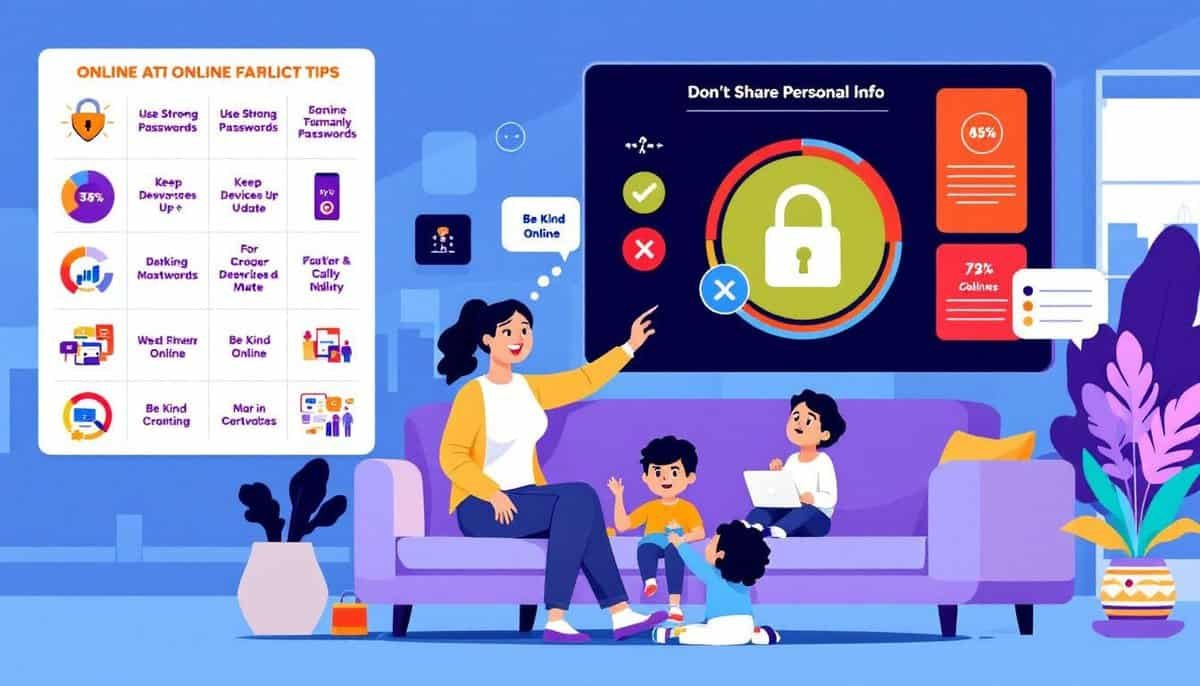
As we delve into the importance of protecting children online, it’s essential to recognize the unique risks they face. From cyberbullying and online predators to sextortion, the online space can be a minefield of threats for the younger generation.
Implementing parental controls, educating kids about online dangers, and monitoring social media use are crucial steps in ensuring a safer online experience for children.
Setting Up Parental Controls
Parental controls are invaluable tools that allow parents to monitor and limit their children’s internet usage, ensuring their safety online. Set up parental controls by navigating to your device’s settings and choosing the appropriate feature, whether built-in or third-party software. Each device may have different steps for enabling these controls, so it’s essential to follow the specific instructions for each operating system or software.
Regularly reviewing and adjusting parental control settings is crucial as children grow and their internet usage evolves. Filters can restrict access to inappropriate content, protecting children from harmful material online. Additionally, setting specific time limits for internet usage can prevent excessive screen time, promoting a balanced digital diet.
Educating Kids About Online Dangers
Teaching children about cyber safety is paramount in helping them recognize risks and know what to do. Adults play a crucial role in this education, guiding children on good conduct and cyber safety. Discussing common online risks such as scams, cyberbullying, and fraud can equip children with the knowledge to navigate these dangers.
Children should also be taught to be cautious with online interactions, as people online may not be who they claim to be. It’s important to educate them on not sharing personal information, including photos, addresses, and phone numbers.
Maintaining a dialogue about kindness online and discussing suspicious messages can help children learn about phishing scams and how to avoid them.
Monitoring Social Media Use
Social media platforms, while popular, can expose children to risks such as online grooming, harmful content, and cyberbullying. Parents must actively supervise their children’s interactions online to mitigate these risks.
Active involvement in children’s social media use helps ensure a safer online experience.
Safe Use of Smart Devices
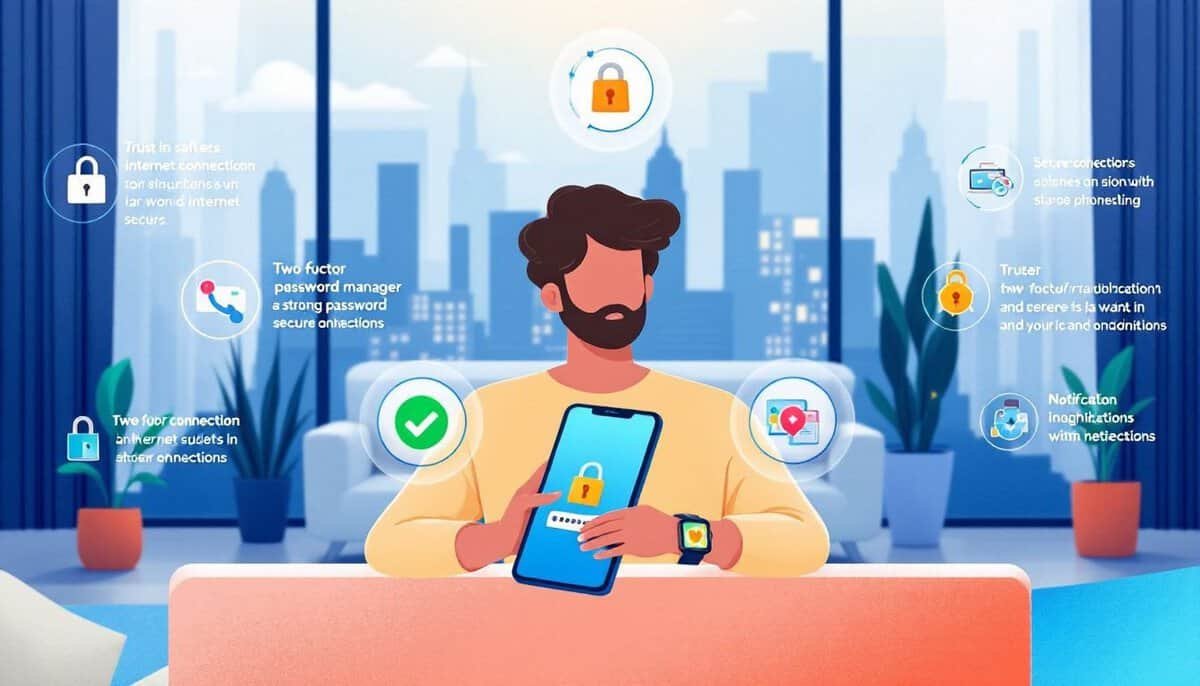
Smart devices have become ubiquitous in our lives, making it essential to use them safely. Regularly updating software and apps is crucial as it incorporates critical security patches that protect against new vulnerabilities. Similarly, keeping antivirus programs up to date is vital for effectively guarding against viruses and malware.
When accessing sensitive data over public Wi-Fi, using a VPN can provide an additional layer of privacy and security. It is particularly important to ensure security when engaging in online banking activities, especially when using public Wi-Fi. Employing security measures such as passwords, passcodes, fingerprint readers, and face-scanning technology further ensures the personal safety of your devices.
Following these practices allows you to benefit from smart devices without compromising online safety.
Recognising and Avoiding Fake Websites
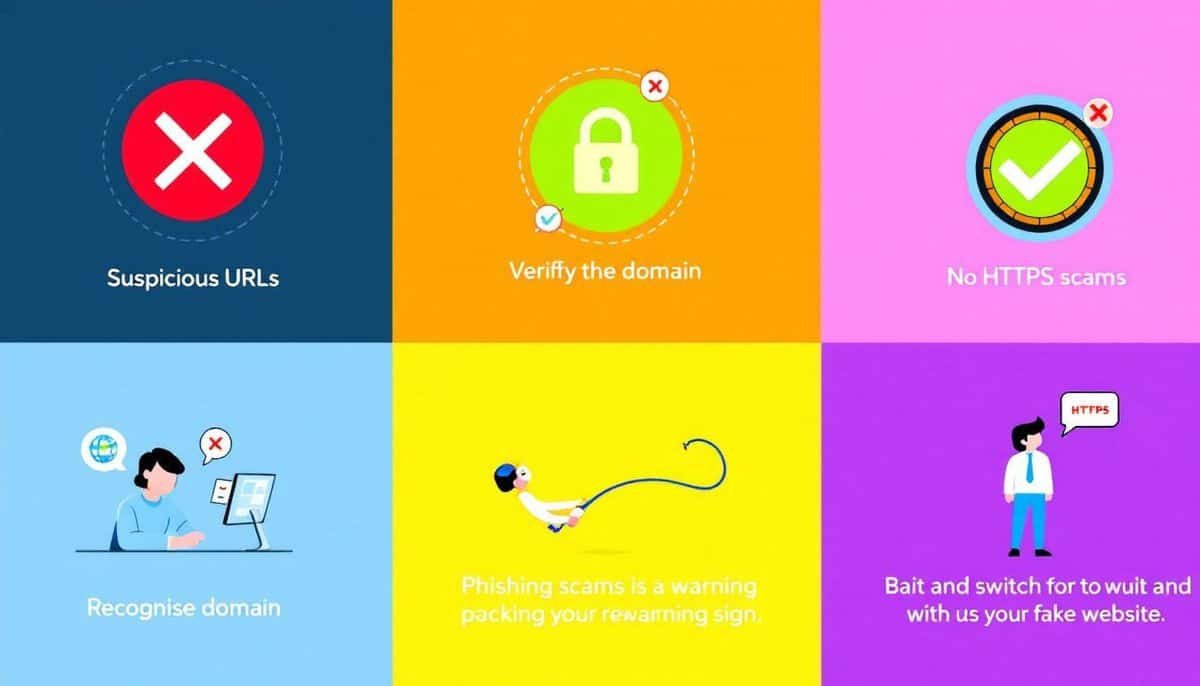
Fake websites are a common ploy used by cybercriminals to deceive users into providing sensitive information. These sites often replicate legitimate login pages for popular services, making it difficult to distinguish them from the real ones. Checking the domain name closely can reveal discrepancies, such as altered spellings or additional characters, indicating a fake site.
While a website’s SSL certificate (indicated by a padlock symbol) can provide a level of security, it should not be the only factor considered for legitimacy. Being aware of these signs can help you recognize and avoid fake websites, ensuring that you stay safe online.
The Role of Schools in Promoting Internet Safety
Schools play a pivotal role in promoting internet safety, ensuring that students are equipped with the knowledge to navigate the digital world safely. The ‘Keeping Children Safe in Education’ guidance outlines the responsibilities of schools for online safety, emphasizing the importance of protecting students online. With children increasingly engaging online and owning smart devices, schools must stay informed and compliant with regulations that protect young users.
The Online Safety Act mandates tech companies to prioritize the safety of young users on their platforms, highlighting the need for schools to educate students about online risks. Effective online safety approaches involve creating e-safety policies, continuously reviewing provisions, and teaching pupils about online risks and harms. By doing so, schools can foster a safer online environment for their students.
Utilising Security Tools
To enhance online safety, utilising security tools such as antivirus software, VPNs, and firewalls is essential. Keeping antivirus software updated ensures that your devices are protected against the latest cyberthreats. Good antivirus programs can guard against common threats like viruses and malware, blocking unauthorised access to your data.
A VPN encrypts internet traffic, providing an additional layer of privacy and security when browsing. Firewalls help prevent unauthorised access to your network by monitoring incoming and outgoing traffic.
Incorporating these security tools can significantly enhance your online safety and protect your personal information.
Summary
In conclusion, understanding and implementing internet safety measures is crucial in today’s digital age. From using strong passwords and enabling two-factor authentication to educating children about online dangers and utilising security tools, there are numerous ways to enhance your online safety. By staying informed and proactive, you can navigate the online world with confidence and security. Remember, a safer online experience starts with you.
Frequently Asked Questions
What is the importance of internet safety?
Internet safety is essential to shield individuals from online risks that threaten personal information and mental well-being. Prioritising it ensures protection against cybercrimes and fosters a secure online environment.
How can I create a strong password?
To create a strong password, use at least 12 characters that incorporate upper and lower case letters, numbers, and symbols. Consider using a password manager to help generate and securely manage your passwords.
What are the common online risks for children?
Common online risks for children include cyberbullying, online predators, sextortion, and exposure to harmful content. It is essential to educate children about these threats and use parental controls to help protect them.
How can schools promote internet safety?
Schools can effectively promote internet safety by educating students about online risks and implementing comprehensive e-safety policies. Staying compliant with regulations like the ‘Keeping Children Safe in Education’ guidance further reinforces their commitment to protecting students online.
What security tools should I use to enhance online safety?
To enhance online safety, utilise updated antivirus software, a VPN for secure browsing, and firewalls to prevent unauthorised access. These essential tools are crucial for guarding against cyber threats and protecting your personal information.
Useful Informative Websites
National Cyber Security Centre (NCSC)
Website: ncsc.gov.uk
Description: Operated by the UK government, the NCSC offers guidance on how individuals and organisations can protect themselves from cyber threats. It includes resources on a wide range of topics, from securing devices to dealing with phishing attacks.
Action Fraud
Website: actionfraud.police.uk
Description: The UK’s national reporting center for fraud and cybercrime. Action Fraud provides information on current scams and advice on how to avoid them, as well as a platform for reporting fraud and cybercrime incidents.
Information Commissioner’s Office (ICO)
Website: ico.org.uk
Description: The ICO is the UK’s independent body set up to uphold information rights. Its website includes guidance on data protection and privacy matters, which are crucial for cybersecurity.
Citizens Advice
Website: citizensadvice.org.uk
Description: While not exclusively focused on cybersecurity, Citizens Advice offers guidance on how to deal with, and report, various types of scams and frauds, including
With over three decades of experience in the heart of London’s financial sector, I have dedicated my career to the pursuit of robust cybersecurity practices and IT leadership. As a Certified Information Systems Security Professional (CISSP), Certified Information Security Manager (CISM), Certified Chief Information Security Officer (C|CISO), Certified Ethical Hacker (CEH), and Computer Hacking Forensic Investigator (CHFI), I bring a wealth of knowledge and expertise to the table.
My journey in the field of cybersecurity has not only been about personal growth but also about sharing my insights with others. As an international speaker, I have had the privilege of addressing audiences worldwide, discussing the importance of cybersecurity in today’s digital age. My passion for knowledge sharing extends to my work as an author and blogger, where I delve into the complexities of cybersecurity, offering practical advice and thought leadership.
In my role as a CISO and Head of IT, I have overseen the development and implementation of comprehensive information security and IT strategies. My focus has always been on creating resilient systems capable of withstanding the evolving landscape of cyber threats.
My Master’s degree in Cybersecurity has provided a solid academic foundation, which, when combined with my practical experience, allows me to approach cybersecurity from a holistic perspective.
I am always open to connecting with other professionals in the field, sharing knowledge, and exploring new opportunities. Let’s secure the digital world together.

